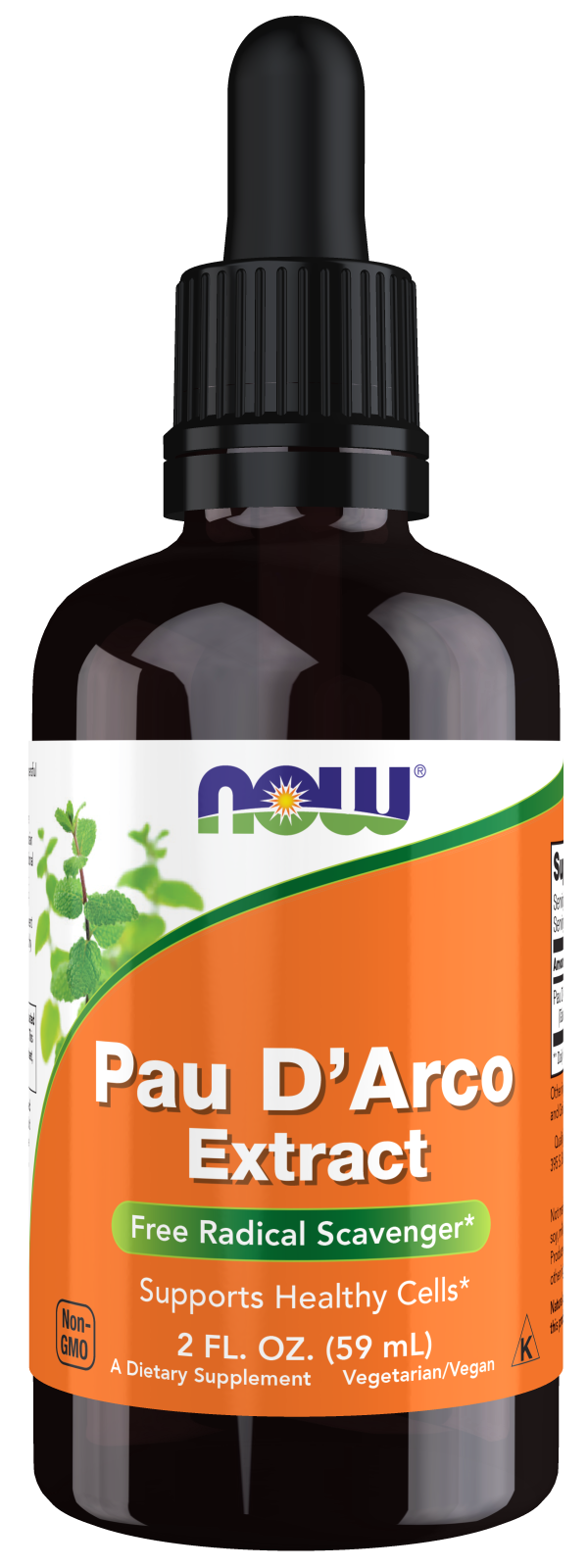Now Foods
NOW Pau D' Arco Liquid Extract 2 fl oz.
NOW Pau D' Arco Liquid Extract 2 fl oz.
14 in stock
Couldn't load pickup availability
Pau D'Arco Bark, the legendary herb from the Brazilian rainforests, is now available in an easy-to-take liquid extract. A hardwood tree that is found deep in the rain forests, Pau D'Arco has a long history of traditional use as a dietary supplement for promoting immune health.
These statements have not been evaluated by the Food and Drug Administration. This product is not intended to diagnose, treat, cure, or prevent any disease.
Serving Information
- Serving Size: 1 ml
- 1 g per serving
- 29 servings per container
- Promotes immune system health
- Herb from the rainforest
- Liquid herbal extract
-
Supplement Facts
Serving Size 1 Dropper (approximately 1 ml)
Servings Per Container 29
Amount Per Serving % Daily Value Pau D'Arco Extract (Tabebuia impetiginosa) (inner bark) 1 gram* *Daily Value not established.
Other ingredients: Vegetable glycerin, purified water.
Suggested Use: As a dietary supplement, take one dropperful (approx. 28 drops) three times per day in a small amount of water. Shake well before use.
WARNING: For adults only. Do not take this product if you are pregnant or nursing. Consult your healthcare provider before using this or any product if you are taking medication or have a medical condition.
Keep out of reach of children. Do not use if seal is broken. Store in a cool, dry place.
***"Pau D'Arco
Ipe roxo; LaPacho; Tabebuia avellanedae; Taheboo tree
Pau d'arco (Tabebuia avellanedae) is native to South America, where it has been used to treat a wide range of conditions, including pain, arthritis, inflammation of the prostate gland (prostatitis), fever, dysentery, boils and ulcers, and various cancers. As early as 1873, there were reported medicinal uses of pau d'arco.
Scientists have identified two active chemicals in pau d'arco. These chemicals are called naphthoquinones: lapachol and beta-lapachone. In lab tests, these chemicals killed some bacteria, fungi, viruses, and parasites. They also have anti-inflammatory properties, and may be effective against diseases such as osteoarthritis. But no one knows whether they will have the same effects in humans, and the dose required would have severe, toxic side effects.
Pau d'arco is sometimes used for the following conditions, although there is no evidence it works:
- Candidiasis (a vaginal or oral yeast infection)
- Herpes simplex virus
- Influenza
- Parasitic diseases, such as schistosomiasis
- Bacterial infections, such as brucellosis
- Cancer
- Most of the chemical research on pau d'arco has been done on the wood and not the inner bark. Pau d'arco contains chemical compounds called naphthoquinones, specifically lapachol and beta-lapachone. They seem to have antifungal, antiviral, and antibacterial properties. They also contain significant amounts of the antioxidant quercetin.
-
Pau d'arco is sold as tablets, dried bark tea, and tincture (which contains alcohol). The chemicals that give pau d'arco its medicinal effects don't dissolve well in water, so a tea is not recommended.
Possible Interactions
Antiplatelet and anticoagulant drugs (blood thinners)
Pau d'arco may affect the blood's ability to clot, and could interfere with blood-thinning drugs, including:
- Warfarin (Coumadin)
- Clopidogrel (Plavix)
- Aspirin"
***This information was taken from the Mt Sinai website.
Share


